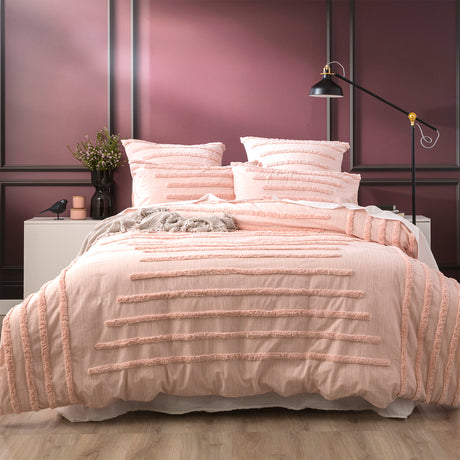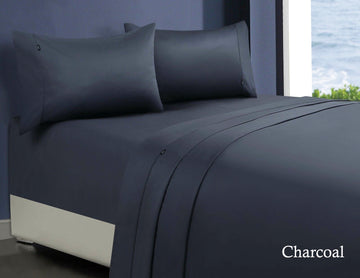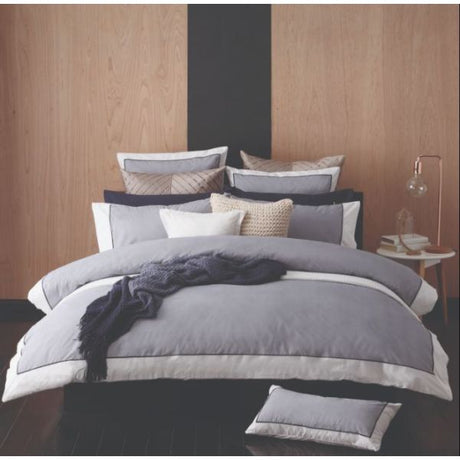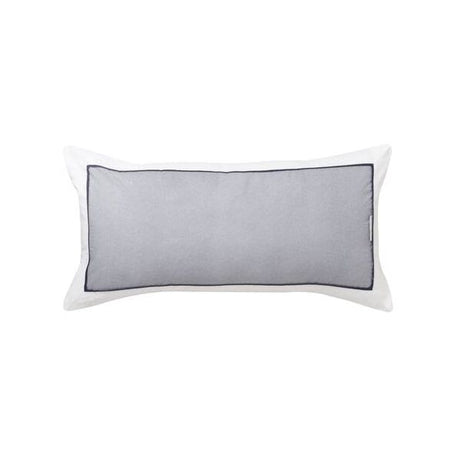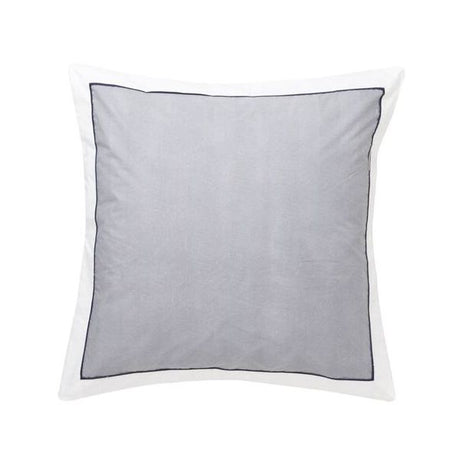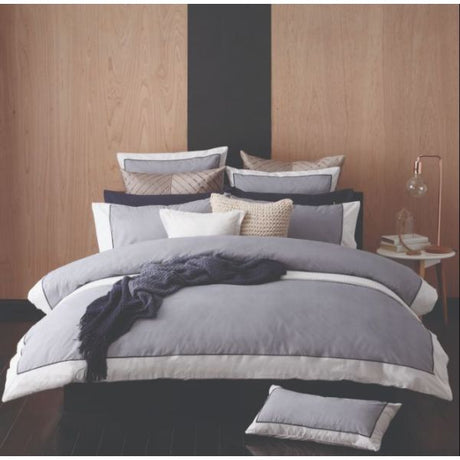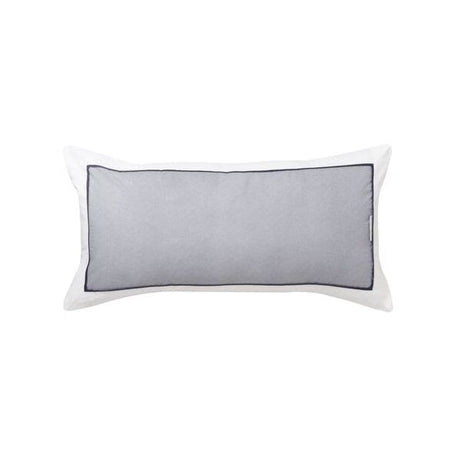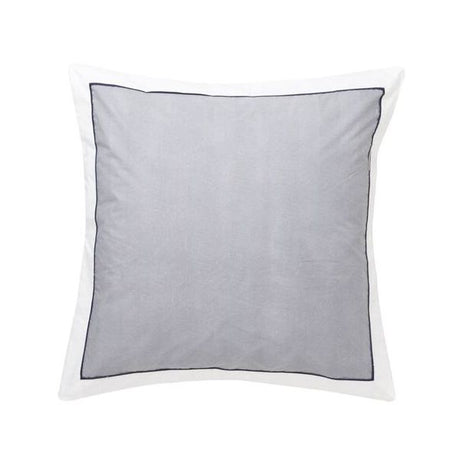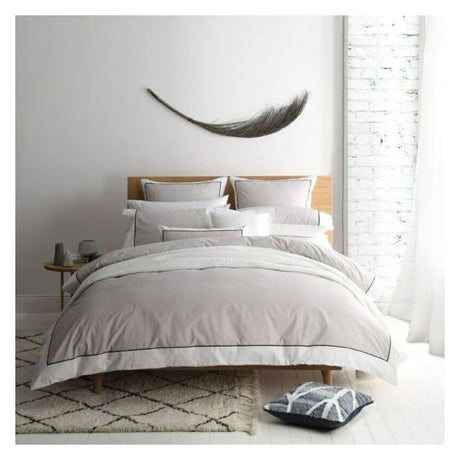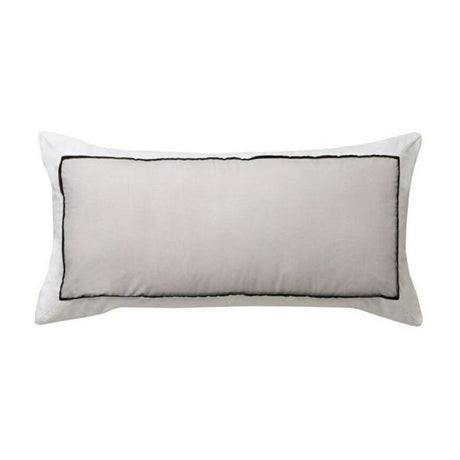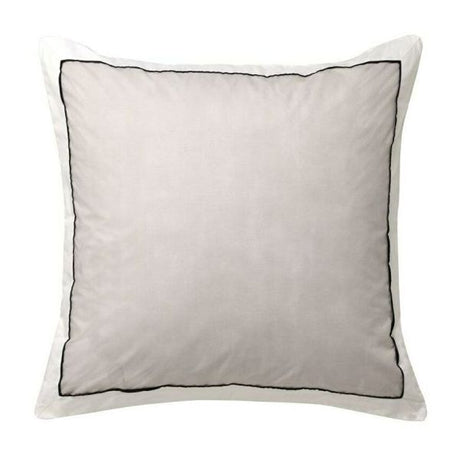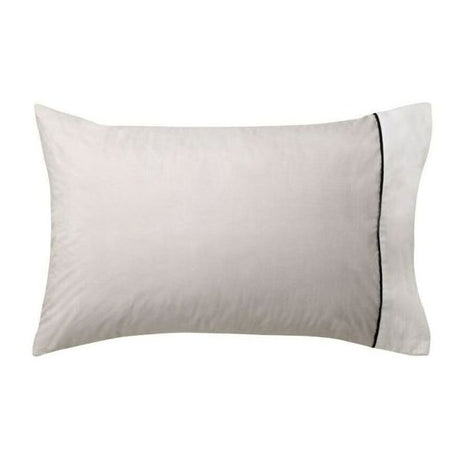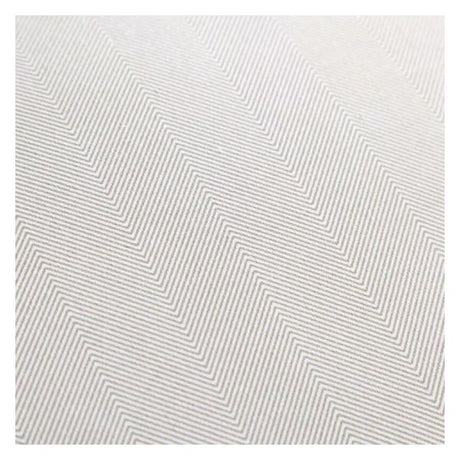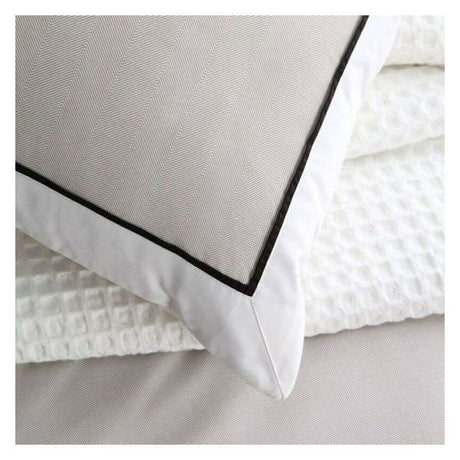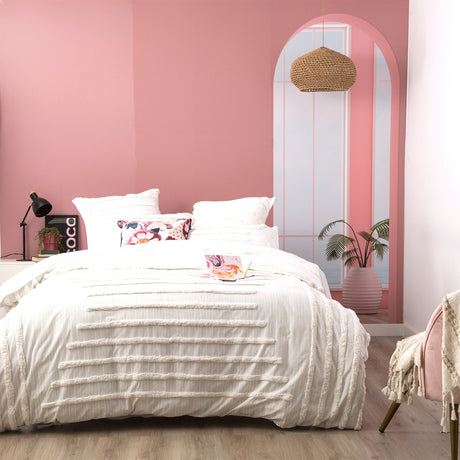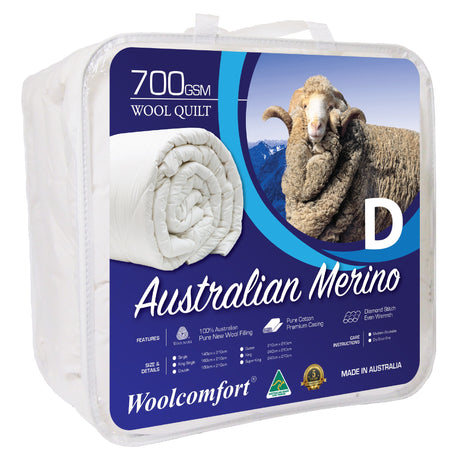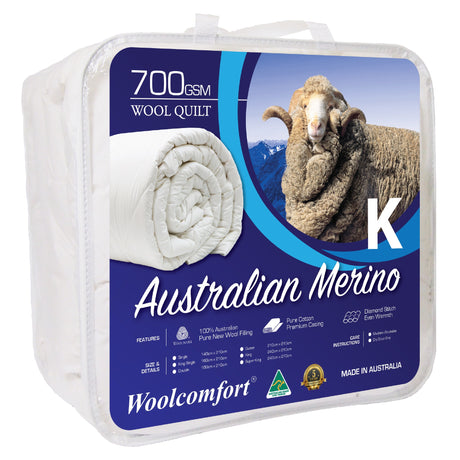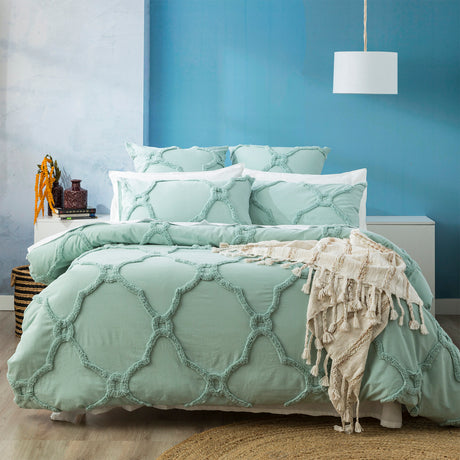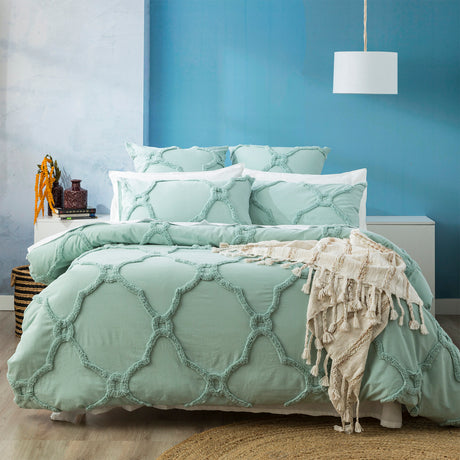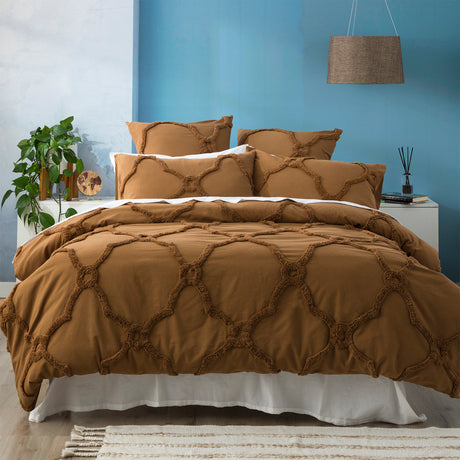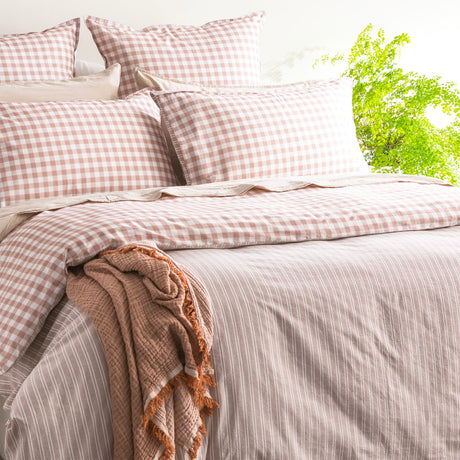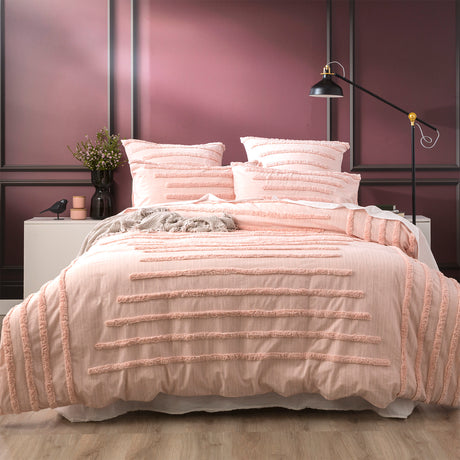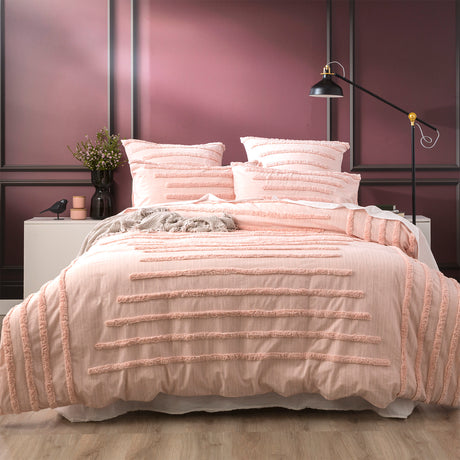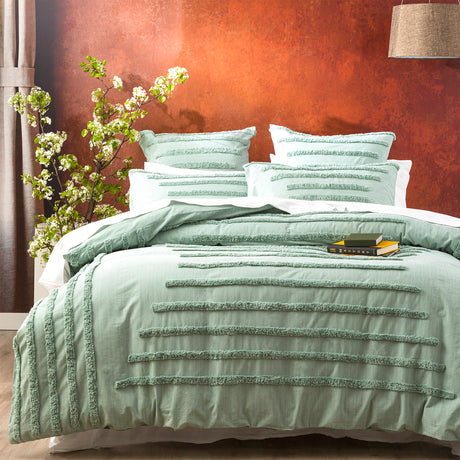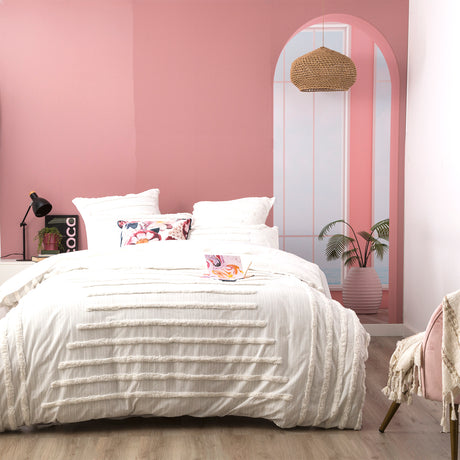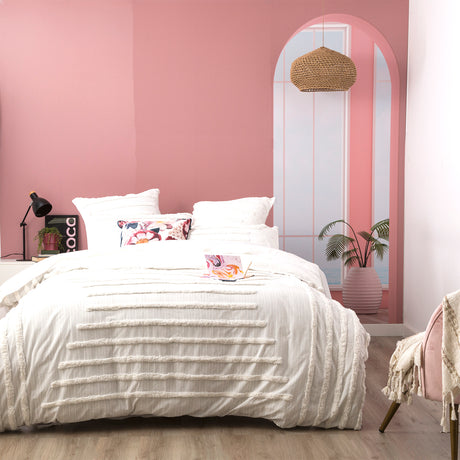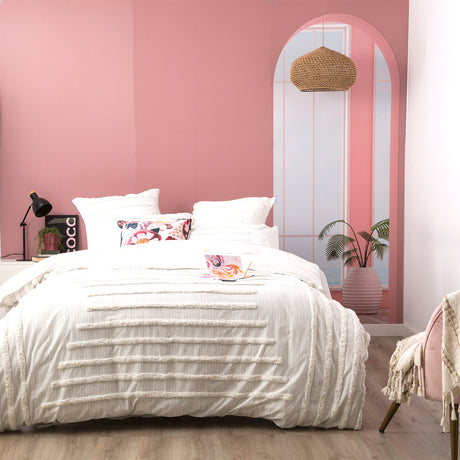Bedding includes sheets, pillowcases, duvet covers, and blankets made from cotton, linen, or microfiber. Designed for comfort and easy care, bedding adds style and warmth to any bedroom. Shop now.
SHOP BY CATEGORY
SHOP BY PRICE
DDV107
Classic Cotton Vintage Washed Tufted Blush Quilt Cover Set by Renee Taylor Super King
$144.99 AUD$279.95Unit price /UnavailableLow stock (12 units)DDV517
1000tc egyptian cotton sheet set 1 mega queen charcoal
$88.99 AUD$229.00Unit price /UnavailableIn stock (44 units)- 12% off
DDV107
Logan & Mason Essex Bed Navy King Quilt Cover Set
$132.99 AUD$151.95Unit price /UnavailableLow stock (10 units) - 16% off
DDV107
Logan & Mason Essex Bed Navy Queen Quilt Cover Set
$114.99 AUD$136.95Unit price /UnavailableLow stock (10 units) - 16% off
DDV107
Logan & Mason Essex Stone Queen Quilt Cover Set
$114.99 AUD$136.95Unit price /UnavailableLow stock (10 units) DDV107
Classic Cotton Vintage Washed Tufted White Quilt Cover Set by Renee Taylor Super King
$144.99 AUD$279.95Unit price /UnavailableLow stock (18 units)DDV535
Woolcomfort Aus Made Merino Wool Quilt 700GSM 180x210cm Double Size
$104.99 AUD$123.00Unit price /UnavailableIn stock (970 units)DDV535
Woolcomfort Aus Made Merino Wool Quilt 700GSM 240x210cm King Size
$121.99 AUD$143.00Unit price /UnavailableIn stock (939 units)DDV107
Moroccan 100% Cotton Chenille Vintage Washed Tufted Sage Quilt Cover Set by Renee Taylor King
$110.99 AUD$229.95Unit price /UnavailableIn stock (50 units)DDV107
Moroccan 100% Cotton Chenille Vintage Washed Tufted Sage Quilt Cover Set by Renee Taylor Queen
$102.99 AUD$199.95Unit price /UnavailableIn stock (50 units)DDV107
Moroccan 100% Cotton Chenille Vintage Washed Tufted Wood Quilt Cover Set by Renee Taylor Queen
$102.99 AUD$199.95Unit price /UnavailableLow stock (11 units)DDV107
Alison Yarn Dyed Cotton Reversible Forest Quilt Cover Sets by Renee Taylor Super King
$118.99 AUD$289.95Unit price /UnavailableIn stock (40 units)DDV107
Alison Yarn Dyed Cotton Reversible Clay Quilt Cover Sets by Renee Taylor Super King
$118.99 AUD$289.95Unit price /UnavailableIn stock (49 units)DDV107
Classic Cotton Vintage Washed Tufted Blush Quilt Cover Set by Renee Taylor Queen
$118.99 AUD$229.95Unit price /UnavailableIn stock (50 units)DDV107
Classic Cotton Vintage Washed Tufted Blush Quilt Cover Set by Renee Taylor King
$132.99 AUD$259.95Unit price /UnavailableIn stock (50 units)DDV107
Classic Cotton Vintage Washed Tufted Blue Quilt Cover Set by Renee Taylor Queen
$118.99 AUD$229.95Unit price /UnavailableLow stock (12 units)DDV107
Classic Cotton Vintage Washed Tufted Sage Quilt Cover Set by Renee Taylor Queen
$118.99 AUD$229.95Unit price /UnavailableIn stock (50 units)DDV107
Classic Cotton Vintage Washed Tufted White Quilt Cover Set by Renee Taylor Double
$110.99 AUD$219.95Unit price /UnavailableLow stock (20 units)DDV107
Classic Cotton Vintage Washed Tufted White Quilt Cover Set by Renee Taylor Queen
$118.99 AUD$229.95Unit price /UnavailableIn stock (50 units)DDV107
Classic Cotton Vintage Washed Tufted White Quilt Cover Set by Renee Taylor King
$132.99 AUD$259.95Unit price /UnavailableIn stock (50 units)
Discover Quality Bedding in Australia: Comfort Meets Style
Bedding is an essential element of every bedroom, encompassing everything from bed sheets and quilt covers to pillows, throws, and blankets. More than just a practical necessity, bedding plays a crucial role in creating a comfortable sleep environment and expressing your personal style. Whether you are outfitting a brand-new master suite, refreshing a guest room, or looking to revamp your child’s sleep space, the right bedding can make all the difference. From students in their first apartments to families upgrading their homes, every Australian household needs quality bedding for a restful night’s sleep.
Why Bedding is in High Demand
The demand for top bedding continues to rise in Australia as more people recognize the impact that good bedding has on both sleep quality and overall wellbeing. With the fast pace of modern life, Australians are prioritizing restorative sleep like never before, making bedding a smart investment for health and happiness. Plus, upgraded bedding provides a simple way to transform the look and feel of any bedroom, catering to both practical and aesthetic needs. The popularity of buying bedding online has also soared, offering convenient access to a diverse range of colours, fabrics, and sizes all from the comfort of home.
Current Bedding Trends in Australia
Bedding trends in Australia reflect a strong desire for both comfort and sustainability. Natural fabrics such as organic cotton, linen, and bamboo are increasingly favoured for their breathability and eco-friendliness. Neutral tones, muted pastels, and earthy textures continue to dominate, providing a calm, modern backdrop that matches any decor. Statement quilt covers, layered throws, and mix-and-match cushions highlight Australia's creative approach to sleep spaces. The freedom to buy bedding online has also made it easier for shoppers to find the latest designs and enjoy exclusive online-only offers. Whether you’re after minimalist sophistication or bright, playful patterns, there’s bedding in Australia to suit every taste and season.
Why Shop Bedding Online in Australia?
Shopping bedding online is the easiest way to access the widest selection of styles and leading brands in Australia. Without ever stepping foot in a store, shoppers can take their time browsing premium sheet sets, snuggly quilts, and luxurious pillowcases. Plus, detailed product descriptions, customer reviews, and fast, local delivery make it easier than ever to find bedding that fits your budget and needs.
Explore Our Bedding Collection
Ready to elevate your sleep experience? In the next sections, you’ll discover everything you need to know about our wide range of bedding options, the latest materials and designs, and top tips for choosing the perfect set for your home. Whether you want to buy bedding for yourself or as a thoughtful gift, our guide will help you make stylish, comfortable, and practical choices you'll love night after night.
Why Choose Bedding?
Bedding is an essential element in any living or working environment, contributing not just to comfort but to health and style as well. High-quality bedding, like that from some of the Top Bedding brands in the industry, can transform a simple sleeping area into a luxurious sanctuary. Whether for residential relaxation, commercial guest satisfaction, or personal well-being, the right bedding can make a significant difference. Selecting the Best Bedding in Australia ensures optimal sleep quality, improved hygiene, and aesthetic enhancement, positioning bedding as a key investment for diverse use cases.
Comfort and Sleep Quality
The primary benefit of bedding is improved sleep comfort. The right combination of sheets, pillows, quilts, and mattress protectors creates a perfect microclimate for sleep, regulating temperature and moisture. Affordable Bedding options today use breathable, hypoallergenic materials that cater to individual needs, allergies, and preferences, helping users to fall asleep faster and wake up feeling refreshed. For those with back or joint issues, premium mattresses and supportive pillows can alleviate discomfort, supporting a restful, restorative night's sleep.
Health and Hygiene Benefits
Quality bedding acts as a barrier against dust mites, allergens, and microbes. Products boasting anti-bacterial and moisture-wicking properties are increasingly common in the Best Bedding in Australia market, supporting healthier sleep environments. For commercial establishments like hotels or healthcare facilities, the hygienic benefits of top-notch bedding are even more critical, reducing allergen accumulation and simplifying cleaning processes.
Style and Ambiance
Bedding is also a key tool in interior design. The variety of colours, patterns, and textures available in Top Bedding lets homeowners and designers craft unique bedroom aesthetics that reflect personal taste or brand identity. For commercial settings, striking bedding can communicate quality and professionalism, enriching the guest experience and contributing to positive reviews.
Where and How to Use Bedding
Residential Applications
In homes, bedding serves various functions. Bedrooms, guest rooms, and even living areas with fold-out sofas all benefit from thoughtfully chosen Affordable Bedding. From breathable cotton sheets for summer to plush duvets for winter, families can tailor their bedding choices to climate and season. Children's bedding often features fun prints and hypoallergenic materials to keep young ones comfortable and engaged. For those in shared accommodations or apartments, compact, easy-to-launder bedding can help maximize space and convenience.
Commercial and Hospitality Settings
In hotels, resorts, and serviced apartments, bedding is integral to guest satisfaction. Durable, high-thread-count sheets and luxe pillows signal quality and care, enhancing the reputation of the business. Layered bedding with decorative throws and cushions adds a touch of opulence, while stain-resistant and quick-drying fabrics simplify maintenance for housekeeping teams. Healthcare facilities also rely on specialised bedding: antimicrobial and waterproof options ensure comfort while meeting strict hygiene standards.
Personal and Specialty Uses
Bedding isn’t limited to conventional beds. Campers, RV owners, and campers often seek Affordable Bedding in portable sizes for travel. For those working from home, throw blankets, floor cushions, or daybed setups can make workspaces cozy and productive. Pet bedding—plush, washable mattresses—caters to furry family members, ensuring everyone benefits from the comfort and support of Top Bedding products.
Choosing the Best Bedding in Australia
Australia's climate and lifestyle demand bedding that is versatile, durable, and comfortable. When shopping for the Best Bedding in Australia, consider factors such as material, breathability, ease of care, and style. Fortunately, a wide selection of Affordable Bedding is available locally, both online and in-store, meeting the needs of families, property managers, and businesses alike. By investing in quality bedding, any space—residential or commercial—can be transformed into a restful, inviting retreat.
Comprehensive Guide to Buying Bedding: Key Features to Consider
Choosing the right bedding can significantly impact your sleep quality and bedroom aesthetic. With so many options on the market, understanding the essential features will help you find the best bedding for your needs. Whether you’re looking for cheap bedding or high-end luxury, keep these 5–7 core features in mind to make the right investment.
1. Material: The Foundation of Comfort
The bedding’s material is crucial for comfort, breathability, and durability. Common materials include cotton, linen, microfiber, bamboo, and silk.
- Cotton: Known for softness and breathability. Egyptian or Supima cotton is often considered best bedding with comfort and longevity.
- Microfiber: A cheap bedding option that resists wrinkles and dries quickly, but may trap heat.
- Bamboo: Naturally hypoallergenic and moisture-wicking, making it ideal for sensitive skin.
Choose the material based on your climate, sensitivity, and desired feel. Material quality also heavily influences the bedding price.
2. Thread Count & Weave: Indicators of Quality
Thread count refers to the number of threads per square inch of fabric, while the weave (such as percale or sateen) affects texture and durability.
- A higher thread count usually translates to finer and softer bedding, but don’t overlook weave—a good percale feels crisp, while sateen is smooth and silky.
- Avoid overly high thread counts in cheap bedding, as sometimes these indicate marketing tactics rather than real comfort.
For the best bedding with softness, aim for quality cotton with a moderate to high thread count (200–600) and a weave that matches your preference.
3. Durability: Long-Lasting Value
Durability ensures your bedding remains comfortable and good-looking over time, even after repeated washing. Natural fibers like long-staple cotton and linen are especially enduring. Reinforced stitching, tight weaves, and double-hemmed edges add to the bedding’s lifespan.
Always balance bedding price with durability: the best bedding with durability often costs more upfront but saves money and hassle in the long run compared to replacing cheap bedding frequently.
4. Comfort and Fit: Guaranteeing Restful Sleep
Above all, bedding must be comfortable and fit your bed properly. Look for:
- Elasticized fitted sheets for a snug, wrinkle-free fit.
- Generously sized flat sheets and duvet covers for full coverage.
- Soft textures and temperature-regulating fabrics.
For hot sleepers, the best bedding with cooling technology includes moisture-wicking bamboo and Tencel. For year-round comfort, natural breathable fibers work best.
5. Ease of Care: Simplifying Your Routine
If you want to keep your bedding looking fresh without fuss, pay attention to ease of care.
- Machine washable and wrinkle-resistant materials save time and effort.
- Light colors and stain-resistant finishes are great for families or pets.
Cheap bedding often makes up for lower price with easier care features, but some premium sets also offer low-maintenance designs. Check wash instructions before buying.
6. Portability and Storage: For Travelers and Small Spaces
If you travel often, have guests, or live in a compact space, portability matters.
How to Choose the Right Bedding: Step-by-Step Buyer's Guide
The right bedding can transform your bedroom, improve your sleep quality, and add comfort to your nightly routine. With so many bedding options for sale online and in stores, it’s smart to evaluate several key factors before you buy bedding. Follow this step-by-step guide to narrow down the best options and find top bedding that fits your lifestyle, needs, and budget.
Step 1: Set Your Budget
- Determine how much you want to spend. Bedding for sale ranges from affordable basics to luxury sets. Decide what you’re comfortable investing upfront.
- Plan for the whole set. Will you need only sheets, or a comforter, duvet cover, shams, and pillows too? Factor that into your total budget.
- Keep in mind that higher prices often reflect better quality, durability, or unique fibers, but deals and discounts are readily available if you watch for sales.
Step 2: Assess Your Space and Mattress Size
- Measure your mattress before you buy bedding. Know the exact size: Twin, Full, Queen, King, or California King. Don’t forget the depth, especially for pillow-top or extra-deep mattresses.
- Consider room proportions and bed height. Large, fluffy comforters look great in spacious rooms; streamlined bedding suits tighter spaces.
- For smaller spaces, lighter colors and minimalist designs can prevent the room from feeling crowded.
Step 3: Define Your Usage Needs
- How often do you use the bedding? Everyday sleeping versus occasional guest use requires different priorities.
- For top bedding that will get heavy use, durability and ease of laundering are vital. Look for tightly woven fabrics and easy-care instructions.
- Do allergy concerns matter? Choose hypoallergenic or dust-mite-resistant materials if sensitivity is an issue.
- Climate counts: Lighter, breathable bedding works in warm regions or for hot sleepers, while down, flannel, or plush fabrics are better for cold nights.
Step 4: Pick Your Material & Construction
-
Common choices include:
- Cotton: Breathable, easy to wash, and available in countless styles.
- Linen: Ideal for hot climates, with a casual, airy drape.
- Microfiber: Budget-friendly, soft, and resistant to wrinkles.
- Bamboo or Tencel: Eco-friendly and ultra-soft options.
- Consider thread count and weave. A thread count of 200–400 is generally sufficient for comfort; sateen feels silky, percale is crisp.
- Don’t forget fill power for duvets or comforters if you want luxury—higher fill power equals more warmth and loft.
Step 5: Choose Colors and Design
- Coordinate with your decor. Do you love bold patterns, subtle neutrals, or classic whites? Make sure your bedding complements your wall and furniture colors.
- Consider reversibility for versatility—some top bedding offers two looks in one.
- Shop for bedding for sale in colors that won’t easily show stains if low maintenance matters to you.
- Seasonal changes: Lightweight, colorful options work for summer; warm, cozy textures suit fall and winter.
Step 6: Look for Extras & Read Reviews
- Check what additional features come with the bedding. Extras like deep pockets for sheets, pillow protectors, or duvet covers with zipper closures can make your bedding more convenient and functional.
- Read customer reviews. Look for feedback on quality, comfort, and durability to help make a more informed decision.
Common Mistakes to Avoid When Buying Bedding
Buying bedding online can be convenient and often more affordable, but for first-time buyers, the experience sometimes leads to regret. Navigating through hundreds of options, unfamiliar materials, and conflicting reviews can make it easy to overlook crucial details. To help you make a wise decision and avoid common pitfalls, here are the top mistakes people make when buying bedding online—and how to avoid them.
1. Ignoring Material and Fabric Quality
One of the most frequent Affordable Bedding mistakes is focusing solely on price and ignoring fabric quality. Cheap bedding may save money up front, but low-quality materials can pill, shrink, or feel scratchy after a few washes.
What to do instead: Always check the product description for fabric type (e.g., cotton, microfiber, linen) and weave quality. Read reviews for insights on how the bedding holds up with regular use, and look for certifications or guarantees from the seller.
2. Not Checking Size and Fit
Many online shoppers forget that bedding sizes vary by country and brand. Ordering the wrong size—especially fitted sheets—often leads to frustration when the bedding doesn’t fit your mattress properly.
What to do instead: Measure your mattress before shopping and double-check the sizing guide provided by the retailer. Watch for pocket depth and label differences like “Full,” “Queen,” or “King.”
3. Overlooking Thread Count Myths
A common Cheap Bedding problem is buying into the hype that a higher thread count is always better. Extremely high thread counts can sometimes signal low-quality fibers or misleading marketing, not enhanced comfort or durability.
What to do instead: Focus on thread count ranges appropriate to material—200–400 for cotton is excellent. Pay more attention to the fiber quality and weave (percale vs. sateen), which impact softness and breathability.
4. Not Considering Return Policies
One of the main drawbacks of Buying Bedding Online is the inability to feel the fabric or see the true color beforehand. If the set arrives and isn’t what you expected, a poor return policy can leave you stuck with bedding you don’t like.
What to do instead: Always review the retailer’s return and exchange policy before purchasing. Opt for shops that allow easy, no-hassle returns or even offer fabric samples.
5. Ignoring Care Instructions
First-time buyers often overlook how bedding should be cleaned and maintained. Some affordable options require special washing or lose quality quickly if not cared for properly.
What to do instead: Review care instructions before you order, especially if you prefer low-maintenance bedding. Choose machine-washable sets if convenience is a priority, and avoid items with complicated cleaning requirements.
6. Skipping Customer Reviews
Skipping in-depth reviews is another frequent mistake. Product images and descriptions may not fully represent real-life colors, comfort, or durability.
What to do instead: Read verified customer reviews to learn about long-term quality, washing results, and actual color or feel. Pay attention to both positive and negative comments for a balanced view.
By steering clear of these common Affordable Bedding mistakes and taking extra time to research, you can transform an online bedding purchase from risky to restful. Invest wisely, and your bedding will provide comfort and style for years to come.
Bedding vs Similar Alternatives
When it comes to outfitting your sleeping area, bedding is essential for comfort, warmth, and home aesthetics. However, there are alternative solutions such as sleeping bags and futons that serve similar purposes. In this comparison piece, we’ll analyze “Bedding Cost vs Sleeping Bags” and “Best Bedding vs Futons,” looking closely at differences in function, cost, and everyday usage. Use this guide to make a well-informed decision based on your lifestyle and budget.
Bedding Overview
Bedding typically includes items like sheets, blankets, duvets, comforters, and pillowcases designed for mattresses. Its main function is to provide comfort, warmth, and style in a stationary sleeping environment such as a bedroom.
Alternative 1: Sleeping Bags
Sleeping bags offer a portable, enclosed sleeping solution ideal for travel, camping, or temporary accommodations. Unlike bedding, they are designed to be compact and easy to carry.
Alternative 2: Futons
Futons are versatile pieces of furniture that serve as both beds and sofas, particularly common in compact living spaces. They can be paired with or without traditional bedding.
Bedding Cost vs Alternatives
| Product | Typical Price Range | Usage | Main Features |
|---|---|---|---|
| Bedding Set | $50 - $300 | Home bedrooms, permanent beds | Comfort, warmth, style, variety of materials/designs |
| Sleeping Bag | $30 - $150 | Camping, travel, guest accommodation | Portable, insulated, weather-resistant |
| Futon | $100 - $500 | Multi-use rooms, guest areas, small apartments | Convertible frame, can use bedding for added comfort |
Function and Purpose Comparison
- Bedding: Best suited for regular use on standard beds, focusing on aesthetics and home comfort.
- Sleeping Bag: Functions as an all-in-one solution for outdoor and temporary sleeping setups.
- Futon: Multifunctional, doubling as both seating and a sleeping surface, adaptable for small living spaces.
Best Bedding vs Alternatives: Pros and Cons
-
Bedding
- Pros: Customizable to taste, supports various comfort levels, easy to wash and replace individual components.
- Cons: Not portable, can be expensive when investing in quality materials.
-
Sleeping Bag
- Pros: Portable, affordable, easy storage, designed for warmth in various outdoor conditions.
- Cons: Limited comfort for long-term use, less breathable, not suited for permanent setups.
-
Futon
- Pros: Space-saving, serves dual purpose, cost-effective for small spaces.
- Cons: May lack the luxury and support of traditional beds, futon mattresses often need regular maintenance/flipping.
Conclusion
In summary, when comparing Bedding Price comparison with sleeping bags and futons, bedding still provides the best long-term comfort and style for stationary bedrooms. However, sleeping bags excel in mobility and affordability for outdoor or temporary use, while futons are ideal for flexible, space-limited environments. Your choice depends on your intended purpose, budget, and need for versatility or permanence.
How to Use or Style Your Bedding: A Lifestyle Guide
When it comes to elevating your personal spaces, bedding is a versatile and impactful choice. Whether you?re seeking comfort, aesthetics, or practicality, bedding can adapt to your needs both indoors and outdoors. Explore these top bedding setup ideas and discover how to use bedding at Duringdays for a refreshed daily routine.
Placement Suggestions: Where to Use Bedding
- Home Bedrooms: Enhance both primary and guest bedrooms by layering throws, quilts, and pillows. Arrange a stand-out duvet as the focal point, complemented by accent cushions and a folded blanket at the foot of the bed for cozy texture.
- Home Office: Incorporate a plush blanket or textured throw over a reading chair, or use a lightweight quilt to create a calming nap nook for midday refreshment.
- Outdoor Living: Bring bedding outdoors for picnics or stargazing. Lay a thick duvet or stylish quilt over your outdoor furniture or spread out a comforter for effortless relaxation on the lawn or patio.
Styling Ideas for a Personalized Look
- Layering: For a luxurious touch, combine various textiles?think linen sheets, knitted throws, and velvet pillow covers. Stick to a soothing color palette or experiment with bold prints and accents for visual interest.
- Mix & Match: Don?t be afraid to blend different patterns and textures. Stripe, floral, and solid bedding can coexist harmoniously when united by a complementary color scheme.
- Daily Refresh: Each morning, fluff up your pillows, smooth your sheets, and fold back your comforter for an inviting feel that?s always ready for use.
Maintenance, Care, and Storage Tips
- Regular Washing: Launder sheets and pillowcases weekly, following care labels. Refresh duvets, throws, and quilts every few weeks to keep them soft and hygienic.
- Proper Storage: Store off-season bedding in breathable cotton bags or storage boxes in a dry, clean space to prevent moisture buildup and dust.
- Gentle Handling: Use mild detergents and avoid overloading the washing machine. Air-dry delicate pieces or use low-heat dryer settings to preserve fabric integrity.
By thoughtfully integrating bedding at Duringdays or in any chosen environment, you can transform both your comfort and style. With proper care and creative setup, bedding serves as both a daily luxury and long-lasting investment in your lifestyle.
Frequently Asked Questions About Bedding
How much does bedding cost?
Bedding cost varies widely based on material, size, and brand. Basic sheet sets may start as low as $20–$40, while luxury bedding or natural fabrics like linen and organic cotton can cost $100–$300 or more per set. Specialty items such as duvet covers or weighted blankets will also add to the price. Shopping during sales or buying bedding online can help you find good deals. Always consider bedding cost in relation to quality and durability to ensure the best value.
What is included in a typical bedding set?
A standard bedding set usually includes a fitted sheet, a flat sheet, and one or two pillowcases, depending on the bed size. Some sets may also come with a duvet cover or shams, especially in larger or premium collections. It’s important to check the product details before you buy bedding online to ensure the set includes all the items you need. Additional bedding like quilts, comforters, or decorative pillows are often sold separately.
Is bedding worth it?
Quality bedding is definitely worth it for comfort and better sleep quality. Investing in good bedding can help regulate temperature, reduce skin irritation, and enhance your overall sleep experience. While higher bedding cost might seem steep, durable materials like cotton sateen or linen often last much longer, making them a better value over time. Read reviews and compare materials to make sure the bedding is worth your money.
How do I choose the best bedding for hot sleepers?
Hot sleepers should look for lightweight, breathable materials like cotton, bamboo, or linen. These fabrics wick moisture and promote airflow, helping to keep you cool at night. Avoid synthetic materials, as they can trap heat. When buying bedding online, check the product description for keywords such as “cooling,” “breathable,” or “moisture-wicking.” The best bedding for hot sleepers will mention temperature regulation features.
Can I buy bedding online safely?
Yes, you can safely buy bedding online if you shop from reputable retailers. Look for stores that provide clear product descriptions, materials, and return policies. Reading verified customer reviews will help you judge the quality before purchase. Make sure the website uses secure payment methods to protect your information. Comparing bedding online also allows you to find the best deals and a wider selection than in-store.
How often should I replace my bedding?
Most experts recommend replacing bedding every 2–3 years, though it depends on material and usage. Signs that it’s time to replace include thinning fabric, pilling, stains, and an overall decrease in comfort. Pillows and comforters may need replacing more or less often depending on care and quality. Washing bedding regularly and following care instructions can extend its lifespan. Consider the bedding cost and durability when deciding how often to update.
What is the best bedding for allergies?
The best bedding for allergies is made of hypoallergenic materials like tightly woven cotton or bamboo, which resist dust mites and other allergens. Look for bedding labeled “hypoallergenic” or “allergy-friendly.” Wash bedding frequently in hot water to remove allergens and consider using allergen-proof mattress and pillow covers. Avoid bedding with feathers or down if you have sensitivities. When you buy bedding online, check product specifications for allergy-safe options.
How do I care for my bedding to keep it in good condition?
Wash bedding in cold or warm water with mild detergent and avoid bleach unless the label allows it. Tumble dry on low or line dry to prevent shrinking and preserve fabric quality. Always follow the specific care instructions provided by the manufacturer. Rotate your bedding sets to distribute wear evenly and store them in a cool, dry place. Proper care will help you get the most value from your bedding cost over time.
What size bedding do I need for my bed?
Bedding sizes correspond with mattress sizes: Twin, Full, Queen, King, and California King are most common. Always check mattress depth, especially for fitted sheets, as deep-pocket options may be needed for thicker mattresses. Review size guides provided when you buy bedding online to ensure a proper fit. It’s better to err slightly larger for comforters and quilts to ensure full coverage. Accurate measurements ensure the best bedding experience.
Which is the best bedding for winter?
For colder months, choose bedding made from flannel, heavyweight cotton, or down-filled comforters for extra warmth and insulation. Microfiber sheets also provide coziness without feeling too heavy. The best bedding for winter will offer added warmth without compromising comfort. Always check product descriptions for material details to ensure you're getting the right bedding for your needs.
